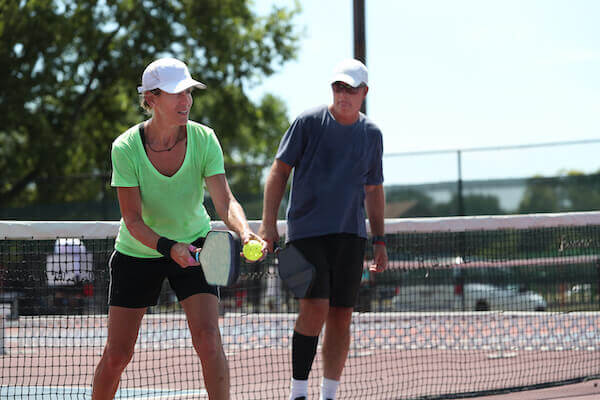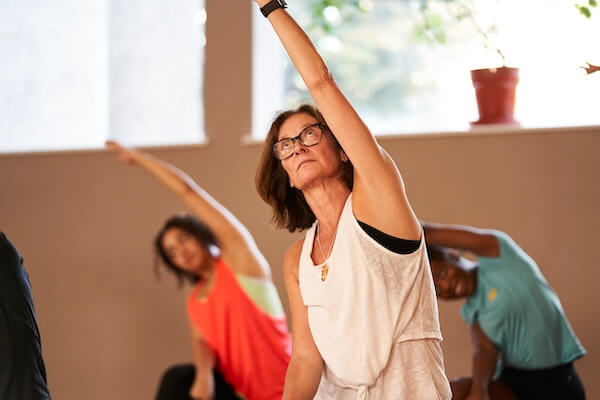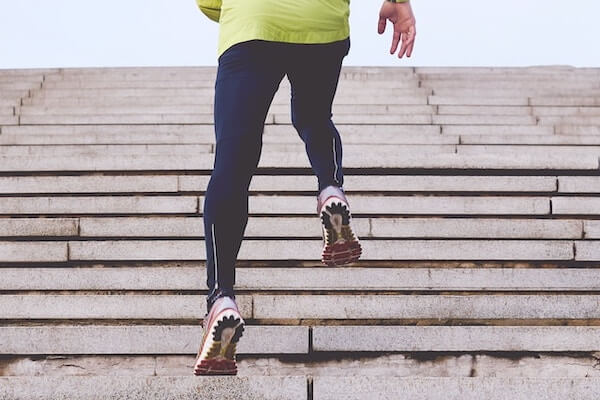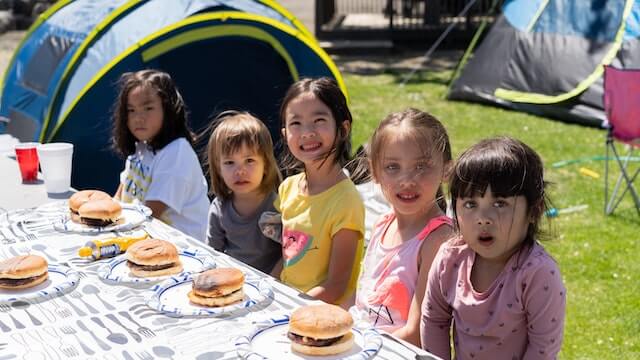
Preparing to go camping with your family for the first time? Here's a guide to family camping in Australia to make your trip as smooth and enjoyable as possible!
Family camping is a great way to bond with your kids and introduce them to the joys of the great outdoors. If you're new to camping, or if your kids have never been camping before, there are a few things you should keep in mind to make the experience as fun and stress-free as possible. From finding the perfect campsite to preparing easy and delicious meals, this guide covers everything you need to know about camping with your family in Australia. So read on and start planning your next trip!
- Introduction
- Location, Location, Location – Choosing a destination
- Picking the Perfect Tent
- Getting a comfortable sleep
- Selecting the Right Gear
- Don't Forget the Food
- Be a smart shopper
- Have Fun!!
Introduction
There is nothing quite like camping under the stars with your family. It's a great way to bond with your kids and give them a unique experience they will remember for the rest of their lives. But there is always the concern that not everyone in the family will enjoy camping. So it is important to start testing the waters with short trips and don't get carried away when shopping.
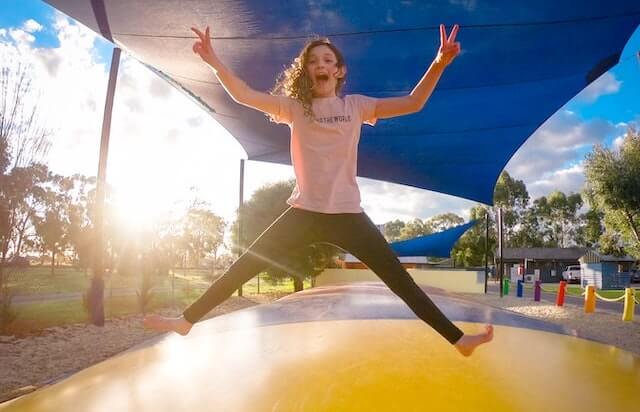
Location, Location, Location – Choosing a destination
When considering your destination, look for a scenic location
that is a short drive away. If things get comfortable or you have
any issues, this way, if things go amiss, you will only be a short
drive from home. We also recommend keeping your first trip to a
one- or two-night trip. Look at the amnesties available at each
campground.
There are many great destinations to choose from, each offering unique natural beauty, activities, and amenities. Here are a few tips to help you choose the perfect destination for your first family camping trip in Australia:
-
Consider your family's interests and needs. Are you looking for a beach vacation, a nature adventure, or a cultural experience? Make a list of your family's interests and needs, and look for a destination that aligns with them.
-
Determine your budget. Australia is a large and diverse country, and the cost of travel can vary significantly depending on your destination. Determine your budget and look for a destination that fits within it.
-
Research the weather and climate. Australia has a varied climate, with temperatures ranging from tropical in the north to temperate in the south. Consider the time of year you will be traveling, and choose a destination with a climate that is comfortable for your family.
-
Look for campsites with amenities. For your first camping trip, look for a campground with all the basic amenities, such as showers, toilets, and BBQ. Depending upon the age of your kids, consider caravan parks, as many of them provide additional facilities such as jumping pillows, swimming pools, bike hire, laundry facilities, kitchens (with kettles, microwaves, fridges, and cooktops), and covered seating areas. Popular caravan park operators include BIG4, NRMA, G'Day Parks, and Discovery Holiday Parks.
-
Choose a destination with plenty of activities. Camping is a great opportunity to spend quality time with your family, and there are many fun activities you can do together. Look for a destination with plenty of activities, such as hiking, swimming, fishing, and sightseeing.
Some great destinations for a family camping trip in Australia include:
-
The Great Barrier Reef: This World Heritage-listed site is home to a stunning array of marine life, and is perfect for families who love the beach and water activities.
-
The Blue Mountains: Located just outside of Sydney, the Blue Mountains offer beautiful views, hiking trails, and plenty of opportunities for adventure.
-
The Grampians: This national park in Victoria is home to stunning rock formations, waterfalls, and abundant wildlife, making it a great destination for nature lovers.
No matter where you decide to go, a family camping trip in Australia is sure to be an unforgettable adventure. With a little planning and research, you can choose a destination that is perfect for your family's needs and interests.
Picking the Perfect Tent
Choosing the right tent for your trip can be a daunting task, but with a little research and consideration, you can find a tent that meets the needs of your family and fits within your budget. Here are a few tips to help you choose the perfect tent for your first family camping trip in Australia:
-
Determine the size of tent you need. The size of tent you need will depend on the number of people in your family and your individual needs. If you have small children, you may want to choose a tent with a separate room for them to sleep in. If you have a large family, you may need a larger tent with multiple rooms. Generally, it is recommended to pick a tent with a "person" capacity at least two above the rated capacity. So, for example, for a 4-person family, choose at least a 6-person tent as it will be a more comfortable sleeping space. Bigger tents can also have extra features like room dividers and more storage pockets, making longer trips more comfortable.
-
Consider the weather and climate. Australia has a varied climate, with temperatures ranging from tropical in the north to temperate in the south. Choose a tent that is suitable for the climate of your destination. For example, if you are camping in a tropical area, you may want to choose a tent with good ventilation to keep you cool.
-
Look for a tent with good quality and durability. Camping can be rough on tents, so it's important to choose one that is made of high-quality materials and is built to last. Look for a tent with a sturdy frame, durable fabric, and a good warranty.
-
Consider the weight and size of the tent. If you are planning to backpack or hike with your tent, you will want to choose one that is lightweight and compact. On the other hand, if you are planning to drive to your campsite, you may be able to opt for a larger and heavier tent. Instant tents are incredibly easy and quick to set up. But they can be bulkier and more expensive compared to dome tents. With dome tents, generally, the bigger tent.
-
Think about the features you need. Do you need a tent with a porch or vestibule for storing gear? Do you want a tent with windows or vents for ventilation? Consider the features that are important to you and look for a tent that has them. Another feature to consider is the standing height inside the tent. Tents have varying maximum standing heights inside the tent. A tent that can accommodate standing full height will allow more comfortable movement inside the tent.
No matter which tent you choose, be sure to test it out before
your trip to make sure it meets your needs and is easy to set up.
It is also recommended to buy a tarp to place under your tent to provide additional insulation from the ground and prolong your tent's life.
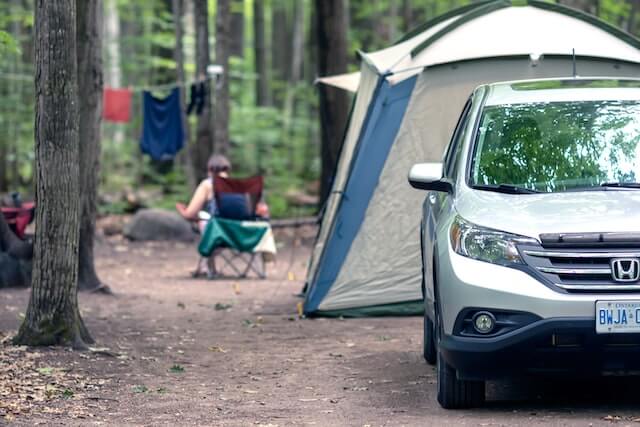
Getting a comfortable sleep
Getting good sleep is vital to ensure you and your family enjoy your camping trip. Sl eeping comfortably while camping can be a challenge, especially if you are not used to it. However, with the right gear and a little planning, you can get a good night's sleep and wake up refreshed and ready for the day's adventures. Here are a few things you will need for a comfortable sleep on your first family camping trip in Australia:
-
A comfortable sleeping pad or air mattress. The ground can be hard and uneven, making it difficult to get a good night's sleep. Some options include self-inflating pads, air beds, and the ultimate in comfort, the 4wd camping beds. For a good balance between comfort, weight, reliability, and compact size, we recommend the self-inflating mats. These are compact to carry, have foam padding inside, and self-inflate with air for further cushioning.
-
A warm and comfortable sleeping bag. Australia can get cold at night, especially in the winter months, so it's important to choose a sleeping bag that is warm and comfortable. Look for a bag with a good temperature rating and a soft, cozy lining. Remember, the temperature rating is a general guide, and it is vital to consider the weather and your personal sleeping requirements. Talk to your local campaign store, and they will be able to advise you on the best option. Generally, sleeping bags rated +5 to +10 are best for summer, 0-degree sleeping bags are all-rounder, and -5 to -10 are better for winter camping.
-
Pillows - Most people are used to sleeping with pillows. While some sleeping bags come with a built-in pillow, you may want to bring your own pillow for added comfort. You can take your own pillow from home or get a self-inflating camping pillow for something more compact.
-
Earplugs and a sleep mask. If you are sensitive to noise or light, earplugs and a sleep mask can help you sleep more comfortably.
-
A tent with good ventilation. A tent that is well-ventilated can help keep you cool and comfortable, especially in warm weather. Look for a tent with windows or vents to allow air to circulate.
-
A comfortable camping chair or hammock. While you may be sleeping in a tent, you will likely spend a lot of time sitting outside during the day. A comfortable camping chair or hammock can provide a good place to relax and unwind.
By bringing these items with you on your camping trip, you can
ensure that you and your family get a comfortable and restful
night's sleep. With a little planning and the right gear, you can
wake up feeling rested and ready for a day of adventure.
Selecting the Right Gear
On top of your usual travel checklist, here is a few additional items you may need when camping:
- Flashlights and headlamps: It can get dark at night in the wilderness, so bring flashlights or headlamps for each member of the family. Head torches are great as they allow your hands to be free. This can be especially useful for late-night trips with kids to the toilet or when rummaging through bags to find your child's favorite soft toy in the pitch dark.
- Boardgames – Great for spending time at your campsite, especially on rainy days.
- Hand sanitiser and Handtowels.
- Insect repellent: Australia is home to many different types of insects, so be sure to pack insect repellent to protect against bites.
- Zip Loc Bags, foil, and plastic wrap
- BBQ and Cooking Utensils
- Cutlery and Tableware
- Spare plastic bags for rubbish and dirty clothes
- Cloth pegs and change for laundry
- Camping chairs and tables
- Dish soap and sponge
- Rags, Dustpan and Broom - For keeping the tent clean and clean up before packing
- Power Extension cable – if getting a powered site. Check with the campground on any requirements they have for extension cables.
- First aid kit: Accidents can happen while camping, so it's always a good idea to bring a first aid kit. Make sure it includes basic supplies like bandages, antiseptic, and pain medication.
- Sunscreen: The sun can be strong in Australia, especially during the summer months. Make sure to bring plenty of sunscreen to protect your skin.
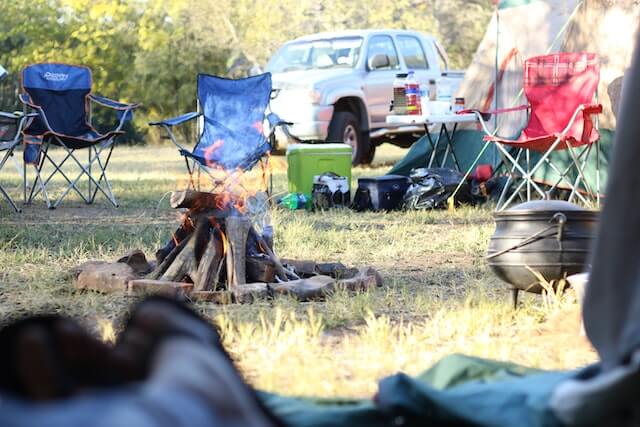
Don’t forget the food
It is worth planning your meals in advance and packing food appropriately. Ensure you also consider what grocery stores and restaurants are in the area.
Here are some tips to help you pack the perfect meals for your trip:
-
Plan ahead: Make a list of all the meals you plan on eating while camping and the ingredients you'll need to make them. This will help you determine how much food to bring and avoid overpacking.
-
Pack non-perishable items: To save space and avoid spoilage, pack non-perishable items like canned goods, dry goods, and snack bars. These will last the duration of your trip and won't take up too much space in your cooler.
-
Pack perishable items in a cooler: To keep perishable items like meats, dairy, and produce fresh, pack them in a cooler with plenty of ice. Make sure to keep the cooler in a shady spot and open it as infrequently as possible to keep the temperature low.
-
Bring a stove and fuel: If you plan on cooking while camping, bring a stove and enough fuel to last the duration of your trip. This will allow you to cook up hot meals and keep you from having to eat cold food the whole time.
-
Pack utensils and cookware: Don't forget to bring utensils and cookware like pots, pans, and bowls to prepare and serve your meals.
-
Bring plenty of water: It's important to stay hydrated while camping, so bring plenty of water bottles and a water filter in case you need to purify water from natural sources.
Be a smart shopper
As you can tell, going on your first camping trip may mean there are a lot of items to take. Going on a family camping trip in Australia can be a fun and budget-friendly vacation, but the cost of camping gear can add up quickly. Therefore, it is always a bright idea to reduce the number of things you purchase until you know your family is ready for camping.
Here are a few tips to help save the costs:
- Consider your campsite carefully – as we said earlier, choose a campsite with plenty of facilities such as BBQs, kitchens, and covered seating areas. This will save you from purchasing (and carrying) items such as portable stoves, tables, chairs, etc.
- Share the experience – Camping with other friends makes the experience more enjoyable. You can also learn from each other and share items.
- Rent gear: If you're not planning on going camping frequently, consider renting gear instead of buying it. Many outdoor retailers and sporting goods stores offer gear rentals at a fraction of the cost of purchasing new. Alternatively, ask your friends or local Facebook group if they have camping items they can lend.
- Get it second hand – Check local op shops, Facebook Marketplace, Gumtree, and eBay for camping items on sale. This is a great way to save money and be kind to the environment through reuse.
- Shop around – Shop for bargains but make sure you also check reviews, especially for important items such as a tent, sleeping bags, and mat.
Have Fun!!
Finally, take your camera (some spare batteries) and have plenty of fun. If you are on Insta, tag us on #keepactiveaustralia so we can follow along.



